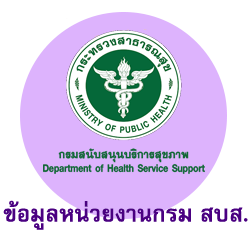ประสิทธิผลของครอบครัวบำบัดตามแนวซาเทียร์ต่อความสอดคล้องกลมกลืนของชีวิตและระดับอาการซึมเศร้าของผู้ป่วยโรคซึมเศร้า ที่รับไว้รักษาในโรงพยาบาล
คำสำคัญ:
ครอบครัวบำบัดตามแนวซาเทียร, ความสอดคล้องกลมกลืนของชีวิต, ระดับอาการซึมเศร้า, ผู้ป่วยโรคซึมเศร้าบทคัดย่อ
การวิจัยครั้งนี้เป็นการวิจัยเชิงทดลองรูปแบบสุ่มและมีกลุ่มควบคุม (randomized controlled trial) มีวัตถุประสงค์ เพื่อทดสอบประสิทธิผลของครอบครัวบำบัดตามแนวซาเทียร์เปรียบเทียบกับการดูแลตามปกติต่อความสอดคล้องกลมกลืน และระดับอาการซึมเศร้าของผู้ป่วยโรคซึมเศร้าที่รับไว้รักษาในโรงพยาบาลพระศรีมหาโพธิ์ กลุ่มตัวอย่างเป็นผู้ป่วยโรคซึมเศร้าที่มีคุณสมบัติตามเกณฑ์ จำนวน 32 คน จัดเข้ากลุ่มโดยใช้ block of four ในการ allocation เข้ากลุ่มทดลองที่ได้รับการบำบัดครอบครัวบำบัดตามแนวซาเทียร์ จำนวน 16 คน และกลุ่มควบคุมที่ได้รับการดูแลตามปกติ คือ การให้การปรึกษา ครอบครัว จำนวน 16 คน วัดผล โดยใช้แบบวัดความสอดคล้องกลมกลืน วัดก่อน หลังทันที ติดตาม 2 สัปดาห์ และแบบประเมิน อาการโรคซึมเศร้า 9 คำถาม (9Q) วัดก่อน หลังสิ้นสุด 2 สัปดาห์ วิเคราะห์ข้อมูลโดยใช้หลักการของ intention to treat analysis ด้วยวิธี Last Observation Carried Forward (LOCF) วิเคราะห์ด้วยค่าความถี่ ร้อยละ ค่าเฉลี่ย ส่วนเบี่ยงเบนมาตรฐาน t- test และ repeated measures ANOVA ผลการศึกษา พบว่า 1) กลุ่มทดลองมีความสอดคล้องกลมกลืนเพิ่มขึ้น จากก่อนทดลอง คือ ร้อยละ 100 และเพิ่มได้มากกว่า กลุ่มควบคุม โดยเพิ่มขึ้นในกลุ่มทดลองระยะหลังการทดลองเสร็จสิ้นทันที และระยะติดตามผล 2 สัปดาห์ เท่ากับร้อยละ 100 ทั้งสองระยะ ส่วนกลุ่มควบคุมเท่ากับ ร้อยละ 81.25 และ 87.5 ตามลำดับ 2) ระยะหลังการทดลองเสร็จสิ้นทันที และระยะติดตามผล 2 สัปดาห์ กลุ่มทดลองมีคะแนนเฉลี่ยความสอดคล้องกลมกลืนสูงกว่ากลุ่มควบคุม อย่างมีนัยสำคัญทางสถิติ (p<.05) 3) ระยะหลังการทดลองเสร็จสิ้น 2 สัปดาห์ กลุ่มทดลองมีระดับอาการซึมเศร้าลดลง ร้อยละ 93.75 ส่วนกลุ่มควบคุมร้อยละ 56.25 และกลุ่มทดลองมีระดับอาการซึมเศร้าลดลงมากกว่ากลุ่มควบคุม (RR=0.1429; p value= .0538; 95%CI= 0.0198 - 1.0320) 4) ระยะหลังการทดลองเสร็จสิ้น 2 สัปดาห์ กลุ่มทดลอง มีค่าคะแนนเฉลี่ยอาการซึมเศร้าลดลงมากกว่าก่อนทดลอง และมากกว่ากลุ่มควบคุม อย่างมีนัยสำคัญทางสถิติ (p<.05)
เอกสารอ้างอิง
American Psychiatric Association. (2003) Practice guideline for the assessment and treatment of patients with suicidal behaviors.Washington DC: American Psychiatric Press.
American Psychiatric Association. (2013). Diagnostic and Statistical Manual of Mental Disorders (DSM-5). Washington, DC: American Psychiatric Association.
Anchuen K., Luethaisong W., Wongjumpa W., Jinarat J., Patipatpakdee H. Supichit A., Motanthasooth W., (2019). Research Project: research and development the family therapy based on Satir Model for patients with major depressive disorders admitted at Prasrimahabodi Psychiatric Hospital 2018-2019: a pilot study of 2019.
Banmen & Maki-Banmen. (2001). Satir’s Systemic (brief) Therapy. California, Science and Behavior Books, Inc.
Banmen, J. (2008). Satir Transformational Systemic Therapy. Palo Alto: Science and Behavior Books, Inc.
Dilek Akça Koca. (2017). Spirituality-Based Analysis of Satir Family Therapy. Spiritual Psychology and Counseling, 2, 121–142. http://dx.doi.org/ 10.12738/spc.2017.2.0027.
Keitner GI, Ryan CE, Miller IW, Kohn R, Bishop DS, Epstein NB. (1995). Role of the family in recovery and major depression. American Journal of Psychiatry, 152:1002–1008. [PubMed: 7793434]
Kongsuk T., Arunpongpaisal S., Sukhawaha S., Leejongpermpoon J. (2011). The effectiveness of the Health care system of Depressive Disorders Surveillance. Ubonratchathani: Sirithamofset printery.
Kongsuk T., Arunpongpaisal S., Janthong S., Prukkanone B., Sukhawaha S., Leejongpermpoon J. (2018). Criterion-Related Validity of the 9 Questions Depression Rating Scale revised for Thai Central Dialect. Journal Psychiatric Association Thailand, 63(4), 321-334.
Lee B. K. (2002). Development of a congruence scale based on the Satir Model. Contemporary. Journal of Family Therapy 24, 217-39.
Limsuwan N. & Limsuwan N. & Arunpongpaisal S. (2007). Satir Model. Journal Psychiatric Association Thailand; 52(1): 1-6.
Limsuwan N. & Limsuwan N. (2012). Psychotherapy Based on Satir Model. Journal Psychiatric Association Thailand, 57(3), 251-258.
Limsuwan N. & Limsuwan N. (2013). Satir Model and Psychotherapy and self-development. Bangkok: Chulalongkorn University printery.
Prasrimahabodi Psychiatric Hospital. (2019). Performance Report of Social Worker Department of October 2019.
Rithpho P. & Buakhai P. (2017). Satir Model Implementation with Pregnancy Woman had Hydrop Fetalis : A Case study. Journal of Nursing and Health Sciences, 11(2), 86-96.
Satir V. (1991). The Satir Model. California: Science and Behavior Books, Inc
Sooksompong S., Kwansanit P., Supanya S., Chutha W., Kittirattanapaiboon P., Udomittipong D., Piboonarluk W., Saengsawang S., Thai Mental Health Survey Working Group. (2016). The Thai National Mental Health Survey 2013: Prevalence of Mental Disorders in Megacities: Bangkok. Journal Psychiatric Association Thailand, 61(1), 75-88.
Srikosai, S. (2008). Effects of individual psychotherapy using the satir model on an alcoholdependent and depressed patient. The Satir Journal 2(3), 5–19.
Srikosai S. & Taweewattanaprecha S. (2012). Psychometric Properties of the Life Congruence Scale Based on the Satir Model: Thai Version. Journal Psychiatric Association Thailand, 57(1), 75-88.
ดาวน์โหลด
เผยแพร่แล้ว
วิธีการอ้างอิง
ฉบับ
บท
การอนุญาต
ลิขสิทธิ์ (c) 2020 Journal of Department of Health Service Support-วารสารวิชาการกรมสนับสนุนบริการสุขภาพ

This work is licensed under a Creative Commons Attribution-NonCommercial-NoDerivatives 4.0 International License.



